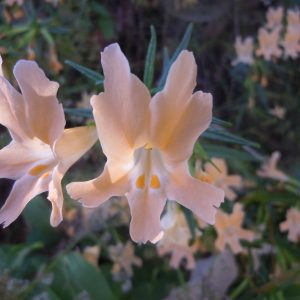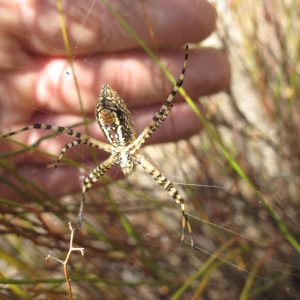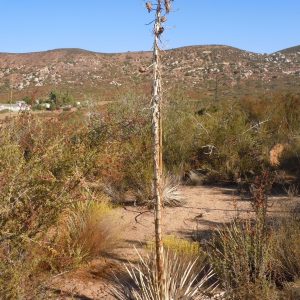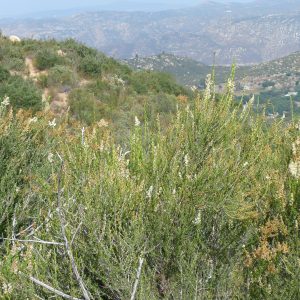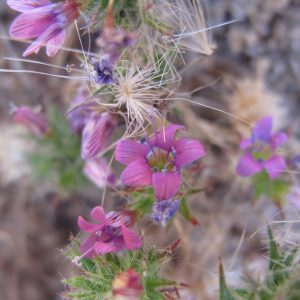- Mimulus aurantiacus
- Hesperoyucca whipplei
As my internship comes to an end, I am compelled to recognize those that ultimately made it possible for me to collect native plant seed for the last six months : pollinators. Some are opportunistically promiscuous while others are extremely specialized in the plants they pollinate. Through natural selection, plants evolve morphological traits that attract the most efficient pollinators. Similarly, pollinators may evolve morphological traits that allow them to harvest floral resources more efficiently from their favored plants. This relationship is referred to as coevolution.
My internship has exposed me to interesting examples of these relationships. Hesperoyucca whipplei is pollinated exclusively by the yucca moth, Tegeticula maculata, in San Diego county. In addition to pollinating this plant, the female moths deposit eggs into the ovaries of the female yucca flowers. The larvae then feed on the developing seeds and hatch to start the cycle over again. Since only a fraction of the total seeds are consumed, this is a self-perpetuating system. These two species are completely dependent on each other for survival and propagation.
Another interesting tale of pollination in San Diego county is that of Mimulus aurantiacus. This species has yellow phenotype predominant inland and a red one predominant towards the coast. The yellow one is pollinated by hawkmoths while the red one is pollinated by hummingbirds. This shows how different phenoytpes of a single species might have been selected for in areas dominated by different viable pollinators. Interestingly, as these two pollinators broaden their geographic range, so do their respective favorite Mimulus phenotypes.
The preceding was another biological lesson I was fortunate enough to encounter on this internship. While I didn’t actually get to see Mimulus getting pollinated, I got to see some yucca moth larvae emerging from yucca seed. Don’t worry, most of the seed was still viable for shipping. I want to take this opportunity to also thank all the humans that made this awesome internship possible. I had a great time. Now it’s time for me to head back to the redwoods.
-Miguel K.

